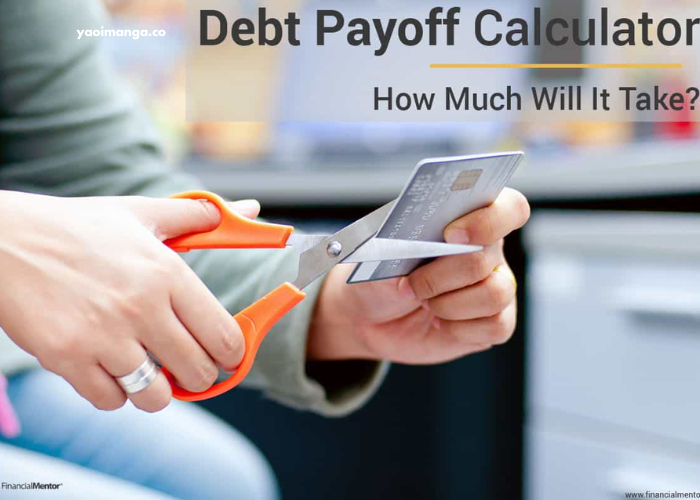Achieving financial freedom is a goal many people aspire to, but the path to it often feels overwhelming, especially when you’re dealing with debt. Debt can be a major barrier to financial well-being, but with the right strategies, anyone can reduce their debt load and work towards financial independence. In this article, we’ll explore practical steps, strategies, and tips on how to reduce debt and ultimately achieve financial freedom.
Understanding Debt and Financial Freedom
Before diving into solutions, it’s important to understand what debt and financial freedom mean.
What is Debt?
Debt occurs when you borrow money from a lender with the agreement to pay it back, often with interest. Debt can take various forms, such as:
- Credit Card Debt: High-interest revolving credit, often used for day-to-day purchases.
- Student Loans: Money borrowed for education, typically with a fixed repayment plan.
- Mortgage: A loan secured by real estate, typically with lower interest rates than credit card debt.
- Personal Loans: Loans for various purposes that may have a fixed repayment period.
Debt becomes a problem when it exceeds your ability to repay or becomes unmanageable due to high-interest rates. The interest you pay can accumulate quickly, which makes it even harder to pay down the principal balance.
What is Financial Freedom?
Financial freedom is a state in which you are no longer dependent on your paycheck to meet your financial needs. It means having enough income from investments, passive income, or savings to cover your living expenses, enabling you to live life on your own terms. Achieving financial freedom generally involves:
- Living below your means
- Reducing and eliminating debt
- Building multiple income streams
- Investing wisely for long-term wealth accumulation
Reducing debt is often one of the first and most important steps toward achieving financial freedom.
Steps to Reduce Debt Effectively
Reducing debt requires discipline, patience, and a well-thought-out strategy. Here are several proven steps to reduce debt and pave the way to financial freedom.
1. Evaluate Your Debt Situation
The first step in reducing debt is to take stock of all your outstanding obligations. It’s crucial to understand the scope of your debt so you can formulate a plan.
Create a List of Debts
Make a list of all your debts, including:
- Credit card balances
- Personal loans
- Student loans
- Mortgages
- Car loans
- Medical bills
For each debt, note the interest rate, minimum monthly payment, and remaining balance. This will help you prioritize which debts to tackle first.
Understand Your Debt-to-Income Ratio
Your debt-to-income ratio (DTI) is the percentage of your income that goes toward paying off debt. A high DTI means you’re spending a large portion of your income on debt, which can make it difficult to save or invest. A lower DTI indicates better financial health. Financial experts recommend keeping your DTI below 36%.
2. Set Clear Debt Reduction Goals
Once you understand your current financial situation, it’s time to set specific, measurable, and realistic goals. For example:
- Pay off all credit card debt within 12 months.
- Eliminate student loan debt in five years.
- Lower overall debt by 30% in six months.
Break your long-term goals into smaller, manageable steps. This way, you can track your progress and stay motivated.
3. Create a Budget
A well-structured budget is crucial to reducing debt. By tracking your income and expenses, you can identify areas where you can cut back and redirect that money toward paying off debt.
Steps to Build a Budget:
- Track Your Income: Determine how much money you bring in every month after taxes.
- List Your Expenses: Categorize your expenses into needs (e.g., housing, utilities, groceries) and wants (e.g., entertainment, dining out).
- Cut Unnecessary Spending: Identify areas where you can reduce spending. For example, you might stop eating out, cancel subscription services, or downgrade your phone plan.
- Allocate Extra Money to Debt Repayment: Use any extra funds from reduced expenses to pay off your debt faster.
A zero-based budget, where you assign every dollar to a specific purpose (including debt repayment), can help you stay on track and prevent overspending.
4. Consider Debt Consolidation or Refinancing
If you have multiple debts with high-interest rates, debt consolidation or refinancing can be an effective way to reduce your monthly payments and save on interest.
Debt Consolidation
This involves combining multiple debts into a single loan with a lower interest rate. A personal loan, balance transfer credit card, or home equity loan are common options for consolidation. This can simplify your payments and may reduce the total amount you pay in interest over time.
Debt Refinancing
Refinancing involves replacing your current loan with a new loan that has better terms, such as a lower interest rate. This can be particularly helpful with student loans or a mortgage.
5. Explore the Debt Snowball Method
The debt snowball method is one of the most popular strategies for paying down debt. It involves paying off your smallest debts first while making minimum payments on larger debts. As you pay off each debt, the money that was going toward that debt is then used to pay off the next largest debt.
Steps to Implement the Debt Snowball Method:
- List all your debts from the smallest to the largest.
- Focus on paying off the smallest debt while making minimum payments on the others.
- Once the smallest debt is paid off, move on to the next smallest debt, and so on.
While it may not save as much on interest in the long term as other methods, the psychological boost from eliminating smaller debts can help you stay motivated.
6. Use the Debt Avalanche Method
The debt avalanche method is similar to the snowball method, but it focuses on paying off debts with the highest interest rates first. This approach minimizes the amount of interest you pay over time.
Steps to Implement the Debt Avalanche Method:
- List all your debts, this time ordered from highest to lowest interest rate.
- Focus on paying off the debt with the highest interest rate while making minimum payments on the others.
- Once the highest-interest debt is paid off, move on to the next highest-interest debt.
The debt avalanche method is often more cost-effective in the long run, but it may take longer to pay off your first debt.
7. Consider Debt Settlement or Bankruptcy as Last Resorts
In some cases, people find themselves in situations where they can’t pay off their debt through conventional means. If you’re facing overwhelming debt that you can’t manage, consider these last-resort options:
Debt Settlement
Debt settlement involves negotiating with creditors to reduce the total amount you owe. This can be done independently or through a professional debt settlement company. Keep in mind that this can negatively impact your credit score, and creditors may not always agree to settle.
Bankruptcy
Bankruptcy is a legal process that can help eliminate or restructure your debt. While it provides a fresh financial start, it severely impacts your credit and remains on your record for several years. It’s typically considered a last resort.
Building Financial Freedom Beyond Debt
While reducing debt is the first step, achieving financial freedom requires a proactive approach to building wealth and maintaining a sustainable lifestyle. Here are a few additional steps to ensure you’re on track for financial independence.
1. Build an Emergency Fund
An emergency fund is a financial cushion that helps you handle unexpected expenses without relying on credit. It typically consists of three to six months’ worth of living expenses. Having an emergency fund provides peace of mind and ensures that you don’t go further into debt during a crisis.
2. Start Investing Early
Investing is a critical part of building long-term wealth. The earlier you start investing, the more your money will grow through the power of compound interest. Consider investing in stocks, bonds, or real estate, depending on your risk tolerance and financial goals.
3. Increase Your Income
Increasing your income can significantly accelerate your path to financial freedom. Consider ways to boost your earnings, such as:
- Asking for a raise or promotion at work
- Starting a side hustle or freelance business
- Investing in education or certifications to qualify for higher-paying jobs
4. Live Below Your Means
Achieving financial freedom requires discipline. It’s important to live below your means, which may involve making lifestyle changes such as downsizing your home, driving a less expensive car, or eliminating unnecessary luxury purchases.
Conclusion
Reducing debt and achieving financial freedom is a journey that requires planning, commitment, and discipline. By evaluating your debt, setting clear goals, creating a budget, and choosing the right debt repayment strategy, you can steadily reduce your debt and move closer to financial independence. Remember, financial freedom isn’t achieved overnight, but with persistence and the right approach, it’s within reach for anyone willing to put in the work.
By taking the steps outlined above, you can free yourself from the constraints of debt and begin to enjoy the peace of mind and opportunity that come with financial freedom. Stay focused, be patient, and over time, you’ll find yourself on a path to lasting financial security.





